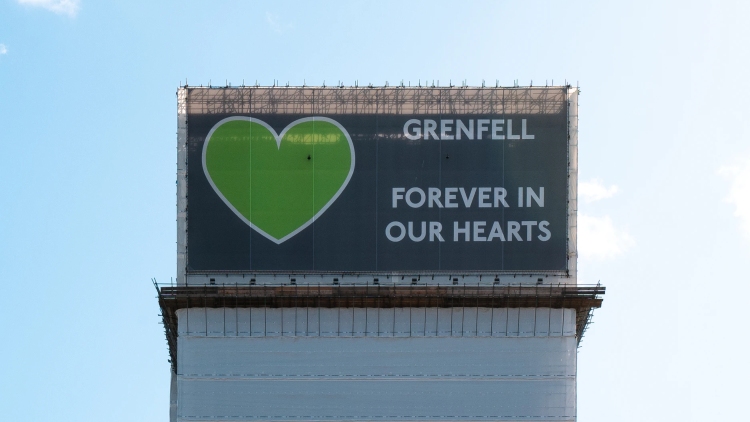
A government adviser told fire and rescue services that there was “insufficient information” to warrant an alert to housing authorities over the risks of certain types of cladding following the 2009 Lakanal House fire in London.
The Grenfell Tower Inquiry heard that in 2009, following the death of six people at the blaze in Camberwell, the London Fire Brigade (LFB) commissioner Ron Dobson wrote to the chief fire and rescue adviser to the Department for Communities and Local Government Sir Ken Knight about the issue.
In his letter, Dobson described how the LFB had had tests carried out on the exterior wall panels of the building and that those tests “have given rise to concerns which may well be relevant to other high-rise premises”.
He continued: “Although our investigations are continuing and the matter has still to come before the coroner, I feel that it is in the public interest to draw the issue to your attention so that the matter can be discussed with the department and any necessary advice can be given to owners and landlords of high-rise buildings.”
Dobson pointed to a summary of functional requirement B4 of the Building Regulations that a building’s external walls should adequately resist the spread of fire.
Dobson said: “Based on the tests conducted by the Building Research Establishment (BRE), it appears that there are external wall panels at Lakanal House, that do not have the necessary reaction to fire properties required for the location in which they have been used. We have also become aware that this type of panel has been supplied by more that one company.
“In the circumstances, we believe it may be appropriate for a warning to be given to housing providers that it would be advisable to check the specification for external wall panels in their high-rise housing stock and check that what has been installed meets the correct specification.”
On 22 December 2009, Sir Ken Knight replied that the strategic investigation and oversight group (SIOG) for Lakanal House recognised that the information in the BRE report had “potential implications for meeting the expectations of certain aspects of Approved Document B of Schedule 1 to the Building Regulations 2000”. But he added that “it was felt that at this time there is insufficient information to warrant alerting housing authorities and/or property owners to the specific matters raised” because the investigation into the surface spread of flame properties of the panels fitted in Lakanal House had not yet been concluded.
Instead, CLG housing policy officials sent a “generic statement” in a letter to housing authorities, which noted concerns raised about the specification of window and cladding systems used on high-rise blocks and recommended that where work subject to Building Regulations was carried out “this should be checked by a Building Control Body (BCB) in accordance with those regulations”.
In December 2012, the LFB also sent a letter to Brandon Lewis, a minister within CLG at the time, recommending further guidance about Building Regulations which covered the spread of fire over the external envelope of a building.
In February 2013, Louise Upton of DCLG sent a reply to Dobson’s letter. In response to a recommendation for further guidance in relation to functional requirement B4, Upton said: “Requirement B4 of the Building Regulations and its supporting guidance explicitly state that external walls should adequately resist the spread of fire over the walls and from one building to another. Further guidance is given in the BRE publication, BR135 fire performance of external thermal insulation for walls of multi-storey buildings which explains the objectives for controlling fire spread on the external envelope of tall buildings in detail.”
When asked about how she felt about the response at the time, former LFB deputy commissioner Rita Dexter said: “I think I felt it was not very satisfactory… That wasn’t a sufficient response to the concerns raised by the commissioner.”
The Inquiry continues.
Comments
Comments are closed.












Why am I not at all surprised – unfortunately big business runs this country and influences legislation /statutory instruments etc. [ heavy duty lobbying of “government…” by cladding manufactures etc.]
I often wonder if the persons who allow these situations to be perpetuated would act
Should their own family members be forced to live in these buildings?
We all in this industry have a duty to care…
John Clinch mciat
Chartered architectural technologist
John Clinch is absolutely correct in his comments. I would like to also add, that lobbying government is one thing, but when it gets down to raising the alarm on matters that could cost peoples lives, that is at another level. But how can government brush such matters under the carpet? If in doubt all installations of known suspect cladding should have been halted, experts such as the BRE, etc should have been urgently enlisted immediately to investigate the risk. It’s not rocket science to prove fire risk! An urgent report then acted upon urgently by government, new urgent legislation passed banning the use of such cladding. And finally, those responsible for designing, manufacturing, supplying, specifying, approving & checking the installation of all future cladding, must be held responsible in law for any non compliance. This particularly applies to LA’s who approve compliance via the Building Regulations, both at approval stage & via their statutory visits to site. First duty of government is to protect the public!